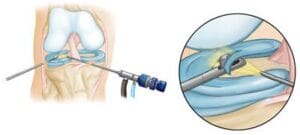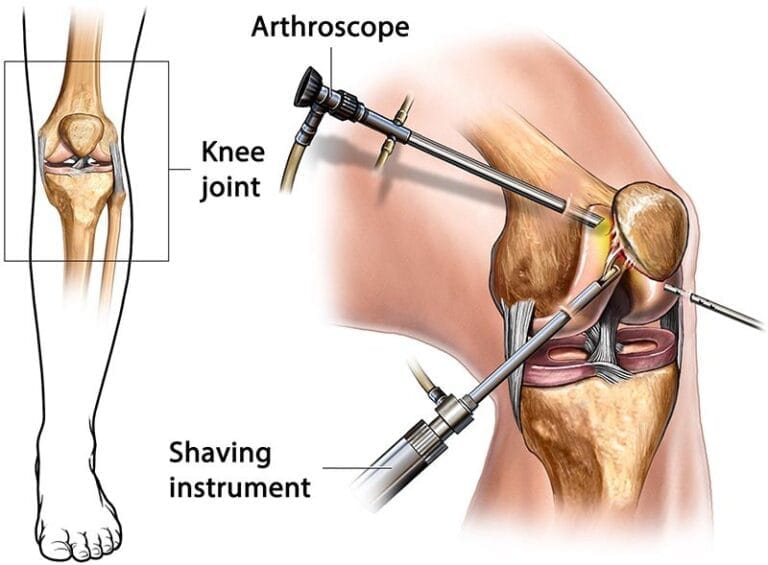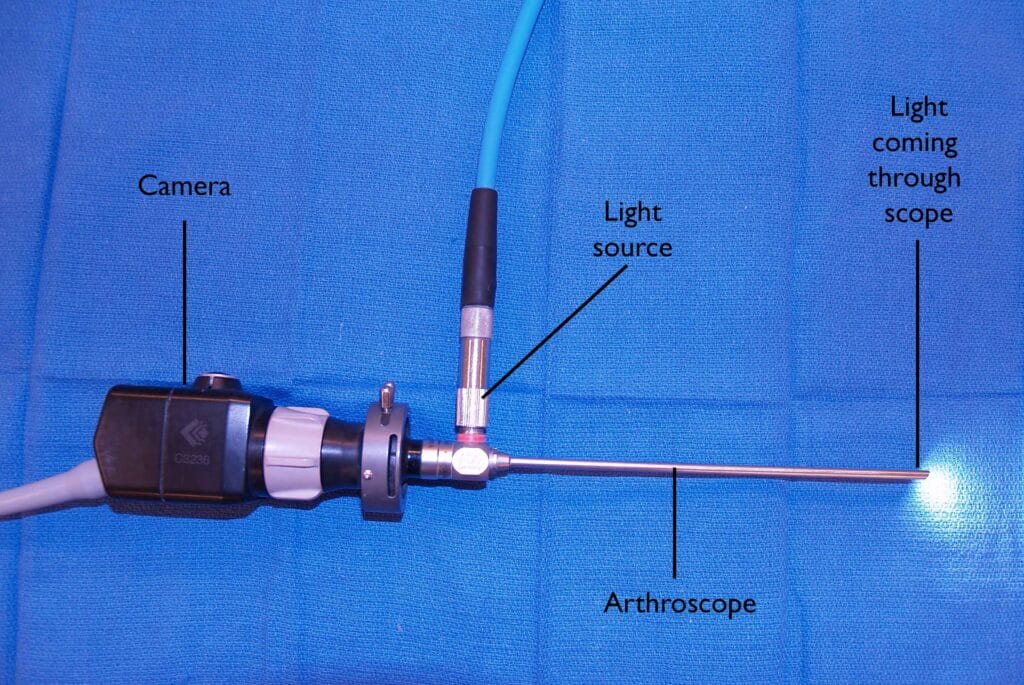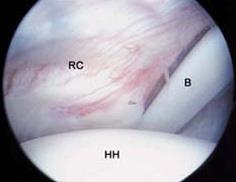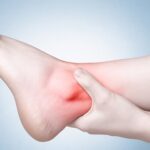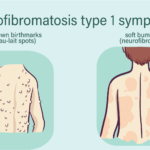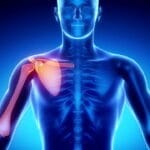The word arthroscopy comes from two Greek words, “arthro” (joint) and “skopein” (to look). The term literally means “to look within the joint.”
In arthroscopic surgery, an orthopaedic surgeon makes a small incision in the patient’s skin, then inserts pencil-sized instruments that contain a small lens and lighting system to magnify and illuminate the structures inside the joint. Light is transmitted through fiber optics to the end of the arthroscope that is inserted into the joint.
By attaching the arthroscope to a miniature camera, the surgeon is able to see the interior of the joint through this very small incision, rather than the larger incision needed for open surgery.
An arthroscope is a small, thin tube that is inserted into the body. A camera and light source are attached to the arthroscope
The camera attached to the arthroscope displays the image of the joint on a video monitor, allowing the surgeon to look, for example, throughout the knee. This lets the surgeon see the cartilage, ligaments, and under the kneecap. The surgeon can determine the amount or type of injury and then repair or correct the problem, if it is necessar
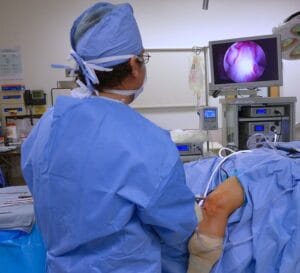
In this photo of arthroscopic surgery, the surgeon views the inside of the patient’s knee on a video monitor.
The parts of the shoulder joint as seen through an arthroscope: the rotator cuff (RC), the head of the humerus (HH), and the biceps tendon (B).
How is arthroscopy performed?
Arthroscopic surgery, although much easier in terms of recovery than open surgery, still requires the use of anesthetics and the special equipment in a hospital operating room or outpatient surgical suite. You will be given a general, spinal, or a local anesthetic, depending on the joint or suspected problem.
A small incision (about the size of a buttonhole) will be made to insert the arthroscope. Several other incisions may be made to see other parts of the joint or insert other instruments.
Corrective surgery is performed with specially designed instruments that are inserted into the joint through accessory incisions. Originally, arthroscopy was simply a diagnostic tool used for planning standard open surgery. However, with the development of better instrumentation and surgical techniques, many conditions can now be treated with arthroscopic techniques.
After arthroscopic surgery, the small incisions will be covered with a dressing. You will be moved from the operating room to a recovery room. Many patients need little or no pain medication.
